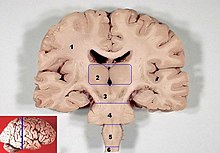
The results, published in the Dec. 5 issue of the Archives of Pediatric Adolescent Medicine, show that 42 adolescent subjects who reported being either abused or neglected show a reduction in gray matter — the tissue containing brain cells — even though they had not been diagnosed with a psychiatric disorder.
“Here we have teenagers who may not have a diagnosable illness but still have physical evidence of maltreatment,” said Hilary Blumberg, associate professor in the Departments of Psychiatry and Diagnostic Radiology and in the Yale Child Study Center, who is senior author of the study. “This could help to explain their trouble with school performance or increase their vulnerability to depression and behavioral difficulties.”
The reduction of gray matter was seen in prefrontal areas, no matter whether the adolescent had been physically abused or emotionally neglected. However, in other areas of the brain the reductions depended upon the type of maltreatment the youth had experienced. For example, emotional neglect was associated with decreases in areas that regulate emotions.
The researchers also found gender differences in patterns of gray matter decreases. In boys, the reduction tended to be concentrated in areas of the brain associated with impulse control or substance abuse. In girls, the reduction seemed to be in areas of the brain linked to depression.
Blumberg stressed these deficits found in adolescents are likely not to be permanent.
“We have found that the brain, particularly in adolescents, shows a great deal of plasticity,” she said (neuroplasticity; comment by R.L.Fellner). “It is critical to find ways to prevent maltreatment and to help the youths who have been exposed.”
(Source: YaleNews; E. E. Edmiston, F. Wang, C. M. Mazure, J. Guiney, R. Sinha, L. C. Mayes, H. P. Blumberg. Corticostriatal-Limbic Gray Matter Morphology in Adolescents With Self-reported Exposure to Childhood Maltreatment. Archives of Pediatrics and Adolescent Medicine, 2011; 165 (12): 1069 DOI: 10.1001/archpediatrics.2011.565)


